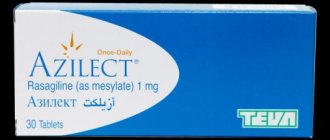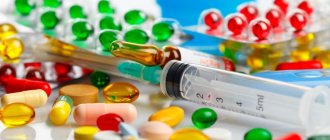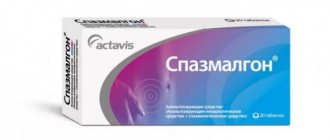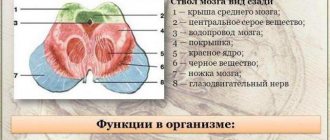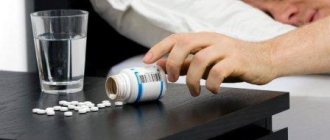Russian scientists have created a drug to restore patients after spinal cord injury
In response to damage to the integrity of the spinal cord tissue, the body launches processes aimed at localizing the site of damage and stopping bleeding. As a result, a scar forms at the site of damage. And if in other organs and parts of the body this scar gradually resolves and the function of the organ is restored over time, then the restoration of the functional activity of the cells and nerve endings of the spinal cord does not always occur.
The connective tissue scar not only disrupts the function of neurons at the site of injury, but also forms a block that prevents the passage of nerve impulses from the brain to parts of the body innervated by the parts of the spinal cord lying below this block. The result is loss or gross impairment of sensitivity in these parts of the body, deterioration or complete absence of movements in the limbs (paresis and paralysis), dysfunction of the pelvic organs.
Currently, there are no truly effective methods and means for restoring the consequences of spinal cord injury. To some extent, neuroprostheses, which receive signals from the brain and transmit them directly to the muscles, bypassing the affected area of the spinal cord, help restore motor functions. These technologies are quite expensive, not always effective, and the degree of movement restoration and control is very low. Exoskeletons are also very expensive and do not restore voluntary movements, but act as an external frame for the human body, allowing walking, although these movements are very far from the biomechanics of “real” walking.
Against the background of the almost complete lack of effective means to eliminate the consequences of spinal cord injury, the development of specialists from the Institute of Fundamental Medicine and Biology of the Kazan Federal University looks extremely promising. They developed a drug based on two genes – VEGF and FGF2. The VEGF gene normalizes blood circulation in the spinal cord when it is damaged, prevents the death of neurons, and promotes the growth of new vessels and nerve fibers. The FGF2 gene is a growth factor that increases the survival of nerve cells during neurotrauma, and also promotes the sprouting of nerve fibers through damaged areas of the spinal cord. The drug created by Kazan scientists also contains regulatory elements that control the functioning of the VEGF and FGF2 genes.
Scientists from Kazan Federal University say that the use of the VEGF and FGF2 genes as active ingredients of the drug will not lead to any changes in a person’s genotype and DNA. “No changes occur in human DNA; both of these genes are already present in the human body,” said Albert Rizvanov, head of the laboratory of gene and cell technologies at the Institute of Fundamental Medicine and Biology of KFU. “We simply introduce additional copies of active genes into the body through several microinjections into the spinal cord above and below the injury. Thus, we modify part of the nerve cells (but do not interfere with their nucleus) and program them for enhanced growth and recovery.”
Tests on laboratory animals have shown that the new drug is capable of restoring the functions of the spinal cord after damage. It is planned to begin preclinical studies within a year; the issue of financing is currently being resolved.
In addition to developing a gene drug, KFU specialists are conducting research into the effectiveness of treating spinal cord injuries using mesenchymal stem cells. “The results of both works are encouraging and show that we can effectively restore the injured spinal cord and its functions in large animals, in particular pigs, and later in humans,” said a senior researcher at the Laboratory of Gene and Cell Technologies at the Institute of Fundamental Medicine and Biology KFU Yana Mukhamedshina.
Abundance of hepatoprotectors
The liver is a fairly hardy organ that performs many functions. But even she, given a certain lifestyle, can no longer cope. When overeating, with a predominance of fatty foods and alcohol in the diet, and with a sedentary lifestyle, it begins to signal a deterioration in its condition. This is manifested by the following symptoms:
- heaviness and pain in the right hypochondrium,
- yellowing of the skin (and sometimes even itching),
- loss of appetite,
- weakness.
In such cases, medications - hepatoprotectors - help. A hepatoprotector is a drug for restoring the liver and normalizing its function. Below are effective medications that provide liver protection.
Hofitol
A choleretic agent with a hepatoprotective effect, but in case of cholelithiasis or acute liver diseases, its use is contraindicated. The active ingredient is a complex isolated from the leaves of the field artichoke. It normalizes liver function, promoting faster metabolism.
It is used mainly for chronic liver diseases, functional disorders of the gallbladder (hypokinetic dyskinesia). Can be taken by children during pregnancy and breastfeeding, but only as directed by a doctor.
Karsil
Karsil is a hepatoprotector of plant origin. Its active ingredient is isolated from milk thistle extract - silymarin. Silymarin is a mixture of flavonoids, plant substances. Karsil has one effect - hepatoprotective, it stabilizes the membranes of hepatocytes, protecting them from free radicals, toxins, and fatty inclusions.
But Karsil should not be taken by pregnant women, nursing mothers, or children under 12 years of age. It is also necessary to take Karsil with caution when taking oral contraceptives and other medications; it is better to consult a doctor before taking it.
Essentiale forte N
This is a drug with the main active ingredient – phospholipids. The peculiarity of phospholipids is that they are part of the structure of the hepatocyte membrane - the liver cell. Its function of protection and regeneration largely depends on the state of the membrane. If it is damaged, toxic substances are more likely to harm the liver and put extra strain on it. The drug can also be used during pregnancy (on the recommendation of a doctor), but not in children under 12 years of age.
See also: What symptoms of vitamin deficiency are found in the structure of the eye
Heptral
The active ingredient of Heptral is ademetionine - an amino acid involved in the metabolic processes of the liver, in the synthesis of phospholipids, of which the hepatocyte membrane mainly consists, and stimulates cell regeneration. Taken for acute and chronic liver diseases, toxic damage. It should not be taken by pregnant women, women during lactation, or children under 18 years of age. There are also other features of the drug that should be taken into account. And its high price and antidepressant effect sometimes confuse buyers.
Phosphogliv
Phosphogliv is a powerful complex drug for liver restoration. Its active ingredients are glycyrrhizic acid and essential phospholipids. As already mentioned, phospholipids restore liver cell membranes and enhance their regeneration. As a result, toxic substances do not penetrate the hepatocyte with the ease with which this occurs when the integrity of the barrier is violated.
Glycyrrhizic acid stimulates the synthesis of interferons, has an anti-inflammatory effect, and reduces the amount of free radicals in the liver that have a damaging effect on cells. The drug also reduces the amount of fat in hepatocytes. It is taken for toxic, alcoholic liver damage, fatty degeneration.
Moreover, the drug can be taken at any stage of the lesion: with a sedentary lifestyle and regular poor nutrition - to prevent disruptions in its functioning. In the treatment of various diseases, you can also take this drug to restore the liver after overeating, drinking alcohol or certain medications that adversely affect the condition of the liver.
How to help the liver with folk remedies
To improve the recovery of liver cells in chronic viral diseases and toxic lesions, it is recommended to use traditional medicine recipes in addition to the main treatment. Here are some of the most popular remedies:
- Milk thistle oil. To support the work of hepatocytes, unrefined milk thistle oil is used 1 tsp. several times a day during meals for two to three weeks. If necessary, the course of treatment is extended or repeated after some time. It is not recommended to use milk thistle oil for people who suffer from pancreatic diseases.
- Honey with cinnamon. To prepare this folk remedy, you need to take a glass jar, 200 g of honey and 2-3 tablespoons of ground cinnamon. Mix honey and cinnamon and place in a jar. Place in a dark place for 7-10 days. To restore liver cells, you should take 1 tbsp. 3 times a day for a month. Use with caution for people prone to allergies and diabetes.
- Alcohol-water tincture of corn silk. A remedy made from corn silk will help restore the liver at home. To prepare it, you need to take 100 g of the healing agent and add 200 ml of vodka and 100 ml of water. Leave the resulting mixture in a cool, dark place for two weeks. To restore liver cells, you should take 1 tsp of tincture. twice a day for a month. The product is contraindicated for use by people suffering from chronic heart and vascular diseases.
- Turmeric with immortelle herb. Turmeric significantly accelerates the regeneration of hepatocytes, and immortelle extract has a powerful antitoxic effect and prevents the development of fatty dyskinesia. To prepare a folk remedy, you need to take a quarter teaspoon of dry spice, a tablespoon of crushed immortelle and pour boiling water over them. After three hours, strain the drink and take 2 tablespoons per day for a week. Immortelle herb can be replaced with vodka or artichoke.
- Oat jelly. Oat jelly will help restore liver cells. The cereal must be poured with water and boiled, then cooled. Strain the resulting mixture and place in a warm place for a day. At this time the solution should thicken. You can add salt, sugar, cinnamon or citrus juice to the resulting jelly. This folk remedy has a beneficial effect on the biliary tract and has an anti-inflammatory effect on the mucous membrane of the gastrointestinal tract.
- Freshly squeezed beetroot and carrot juice. To prepare this product, you need to mix freshly squeezed carrot and beet juice in a 3:1 ratio, then let it brew in the refrigerator for 1-2 hours. It is recommended to take the drink three times a day after meals. If desired, you can add lemon, sugar or honey. Carrots have a choleretic effect, relieve spasms of the ducts, and beets prevent the formation of stones. People with gastric ulcers, duodenal ulcers, and chronic gastritis should dilute the juice with boiled water.
Remember that restoring the liver with folk remedies does not replace full-fledged drug treatment. The use of alternative medicine recipes has a number of contraindications, and before using them it is necessary to consult with a specialist and conduct laboratory and instrumental studies of the gastrointestinal tract.
Does the liver recover?
Organ tissues are able to recover even after significant damage, incl. after resection. The liver is one of the few unusual organs that can return to its original size even while maintaining 25% of its original volume. Regeneration occurs very slowly, and rapid volume restoration occurs due to an increase in the volume of the remaining cells.
Causes of liver cell destruction
Among the main reasons for the development of pathology are the following negative effects on hepatocytes:
- environmental influences (polluted water, air, low-quality products, working with harmful chemicals, etc.);
- abuse of alcoholic beverages;
- treatment with hepatotoxic drugs (antibiotics, antitumor chemotherapeutic agents);
- unhealthy diet (eating fatty, spicy, fried foods);
- physical inactivity;
- elderly age;
- malignant neoplasms;
- infectious and viral diseases.
Can the liver repair itself?
Hepatocytes have a unique property of regeneration, i.e. independent restoration of organ tissues and cells. During the regeneration process, individual hepatocytes divide several times and then return to a resting state, following certain mechanisms. Intrahepatic stem cells take an active part in the compensatory regeneration of the organ after partial fatty degeneration, hepatosis or precirrhotic tissue changes.
How quickly does it recover?
It is impossible to name the exact rate of hepatocyte recovery. According to clinical studies, how quickly regeneration occurs depends on many factors:
- use of drug therapy;
- traditional methods;
- lifestyle;
- presence of damaging factors;
- heredity;
- age.
Reviews of the best drugs for liver cell restoration
Before choosing the best drug for liver restoration, it is worth reading reviews from people who have tested some of them from their own experience.
Alexander, 40
“When I was young, I had problems with alcohol for several years. As I got older, I stopped drinking, but after I turned 30, serious liver problems began. I went to doctors who prescribed me various medications, some of which helped me, but not for long. A lot of money was spent, but essentially to no avail. I heard about Phosphogliv and decided to try it. Three months of treatment - and the tests began to improve, approaching normal. Three years have passed, and I still periodically take a course of Phosphogliv to maintain liver health.” Irina, 29
“I was diagnosed with fatty liver. Physical activity, medications, unhealthy diet - no matter what I do, heaviness appears in the right hypochondrium. The doctor prescribed Phosphogliv for me. In addition to its main effects, it also has an anti-inflammatory effect, which is a significant advantage. In addition, it is also cheaper than its analogues. As for adverse reactions, it is indicated that they exist, but they did not affect me in any way. And, what’s important, it helped bring my blood counts in order.” After analyzing reviews of drugs for liver restoration, we can conclude that most reviews of the drug Phosphogliv are positive. It follows that this drug was indeed effective among the majority of people taking it. But, in any case, do not self-medicate; sometimes it is worth consulting with a doctor if you want to take this or that drug. But if you have carefully read the instructions, taken into account the contraindications and want to put your liver in order after difficult days, then Phosphogliv will help you too.
Liver diseases, if untreated, progress to irreversible diseases, including coma and death.
Success in treatment is achieved in cases of strict adherence to the doctor’s instructions. Not all diseases can be treated until complete recovery.
Vitamin E
Vitamin E is a fat-soluble vitamin that is also an antioxidant. Vitamin E is a family of eight different compounds, of which alpha-tocopherol is the most active. The daily requirement for vitamin E for an adult is 15 mg (22 IU). Given that it is a fat-soluble vitamin, the best sources are vegetable oils and nuts. An excellent source of this vitamin is wheat germ oil, which contains approximately 20 mg (30 IU) per tablespoon. A serving of sunflower seeds, almonds, sunflower and safflower oils contain approximately 6 mg (9 IU) of alpha-tocopherol. People who eat a low-fat diet are more likely to be deficient in vitamin E.
Vitamin E protects cells from damage
Vitamin E protects from oxidation those parts of the cell that contain fats: cell membranes, cholesterol-carrying proteins. Just like vitamin C, vitamin E controls oxidative stress levels.
One example of how vitamin E protects cells from damage is in liver cells. Oxidative stress in liver cells can be caused by excessive consumption of alcohol, fatty and high-calorie foods. As a result, the levels of two enzymes increase in liver cells - alanine aminotransferase (ALT) and aspartate aminotransferase (AST). High doses of vitamin E reduce ALT and AST levels compared to placebo control [4]. This is why it is so important to consume enough vitamin E with food.
Important: great care must be taken when taking medications that contain vitamin E. Regular use of such medications is associated with increased mortality [5, 6]. Research in Japan has shown that excessive consumption of this vitamin can lead to osteoporosis [7]. Therefore, you should try to get vitamin E through food. Wheat germ oil, sunflower oil, almond oil and safflower oil have a high content of vitamin E.

